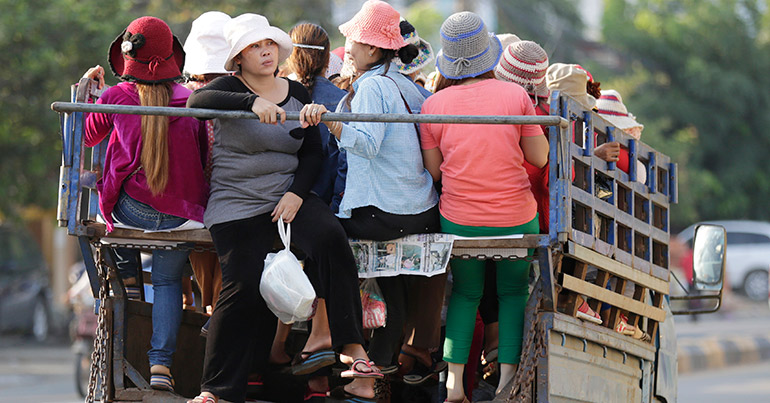As the International Labour Organisation kicked off its 16th annual Asia and the Pacific Regional Meeting today, Maurizio Bussi, director of the ILO country office for Thailand, Cambodia and Laos, spoke to Southeast Asia Globe about the challenge of turning the region’s economic growth into social progress

“We have disparities. We have seen countries growing very fast, or at an accelerated level, in terms of GDP growth and other parameters. But there is a feeling that is persistent, I would say, in most of the countries across the region – that this [growth] has not been associated with social progress. Social progress, essentially, is the quality of jobs and the protection of jobs.
If you want a buzzword, then normally the kind of sentence that I use is ‘protecting the greying and the growing’ – the greying, the ageing societies, and the growing, the sort of young societies that are growing fast, but not in a very balanced way. The greying are obviously the countries, the economies, where a few years ago an investment was made in terms of setting up the economic systems, diversifying the economies and so on. But now is the time to start paying pensions, to start paying unemployment benefits, and so on.
[Look at] the case of Thailand, for example. Thailand made good investments about 25 years ago in setting up systems, giving pensions, giving home insurance. Now people are starting to retire. And [the government] has to start paying pensions.
The second trend that we see is how countries can understand and take policy measures to essentially phase the end of cheap labour. These are economies that, in the last 20 to 30 years, they’ve built their systems and their economic growth, essentially, on cheap labour. They were the workshops of the world – it was convenient, infrastructure was reasonably okay, the people were abundant in terms of the labour force. They were certainly happy and able to work for long hours. So they produced a lot of stuff, if you like, at a relatively marginal cost.
This trend is reversing a bit, so they are less inclined to do these kinds of jobs. Either because a different trajectory of development, or because machines, they will do that. Or because it becomes not very profitable to do a certain thing a certain way. So how can countries really understand this trajectory, which I call the end of cheap labour?
The third trend, I would say, is economic integration. Economic integration, what it means in terms of labour, obviously there are a number of implications – regulated mobility of people, skill certification, portability of social protection instruments, if you move towards country ‘A’ from country ‘B’, assuming you are recognised in the profession, the trade that you have, do you have the same conditions of work, conditions of employment, do you have the same benefits in terms of house insurance, the basic benefits or pensions. Can you bring them back to your country when you decide to leave? Or are there mechanisms that recognise that in terms of skill accreditation. So ensuring that there’s no discrimination between national workers and people coming from outside. This is what Asean is trying to put together – a labour market that is more integrated where, in principle, people should be able to move from one country to the other.
That’s the third. And the fourth, which is a bit of a crosscutting theme, how do we use this global framework for sustainable development goals to service these three areas of importance in terms of the labour market dynamics? How do you use, as a government, the SDG [Sustainable Development Goals] framework, to ensure that these three areas are well-anchored in terms of the values, principles, normative, the statistical work and the policy work to the SDG framework that all the countries have committed to follow and observe?”
The end of cheap labour in Southeast Asia?
As the International Labour Organisation kicked off its 16th annual Asia and the Pacific Regional Meeting today, Maurizio Bussi, director of the ILO country office for Thailand, Cambodia and Laos, spoke to Southeast Asia Globe about the challenge of turning the region’s economic growth into social progress

